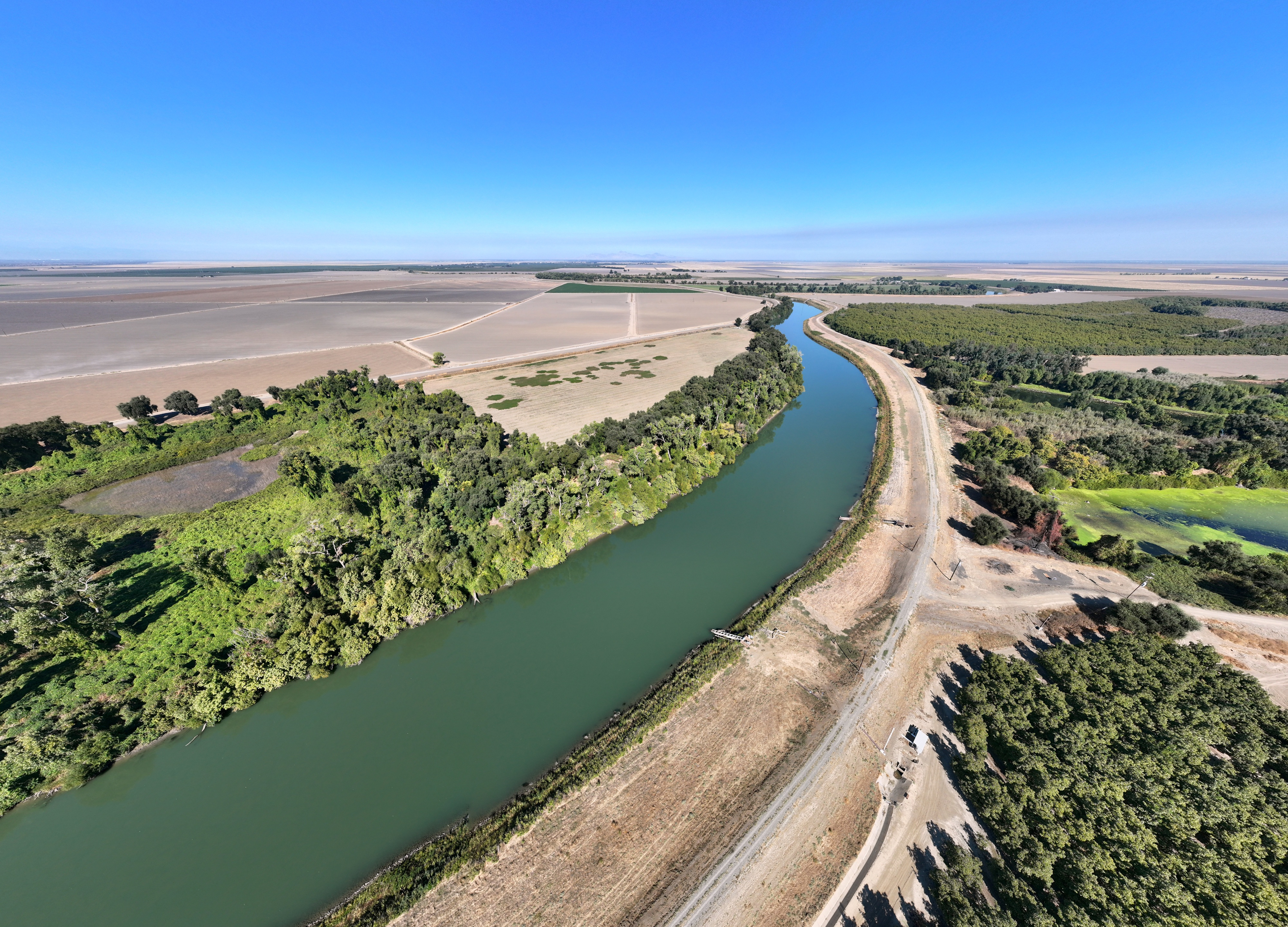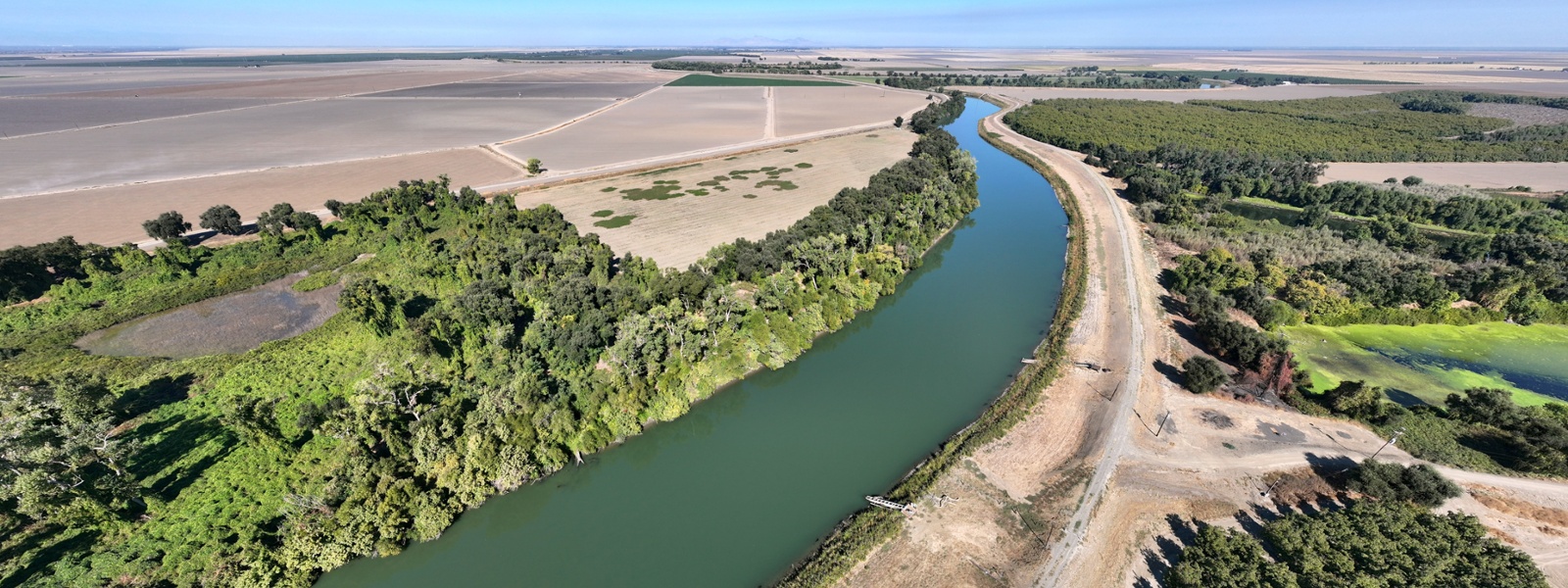Summit tackles water challenges facing California

Turning Point drone shot of Sacramento River,
Photo/ California Department of Water Resources

By Christine Souza
Below-average precipitation and snowpack during 2020-22 and depleted surface and groundwater supplies pushed California into a drought emergency that brought curtailment orders and calls for modernizing water rights.
At the Water Education Foundation annual water summit last week in Sacramento, Eric Oppenheimer, chief deputy director of the California State Water Resources Control Board, discussed what he described as the state’s “antiquated” water rights system. He spoke before some 150 water managers, government officials, farmers, environmentalists and others as part of the event where interests come together to collaborate on some of the state’s most challenging water issues.
Of the state’s water rights system, he said it is “kind of a strange system with riparian and pre-1914 and post-1914 (water rights), all operating under slightly different rules and requirements, and it is a challenging system to manage.”
During the last two droughts, Oppenheimer said, “the system was really pushed to the brink where we realized very quickly that the data that we were using…was not up to the task.”
He said data is key to a functioning water rights system. “There are just huge errors in our data, and some of that is a function of we haven’t been collecting data that long in a digital format,” Oppenheimer said.
Water rights discussions also focused on Senate Bill 389, by state Sen. Ben Allen, D-Santa Monica. Signed by Gov. Gavin Newsom this year, it authorizes the state water board to investigate water rights.
Alexandra Biering, California Farm Bureau senior policy advocate, said the Farm Bureau and others moved to a neutral position on the bill after important amendments were made.
“To the extent that we could put a few things in the bill that made it clear that this wasn’t a tool to be used to go after people unless there was a good reason to do so, many people became much more comfortable,” Biering said.
She noted the final bill requires the water board to be transparent by explaining why it needs water right information from diverters.
While she has heard about various proposals to modernize water rights, Biering said, “you can actually do what you need to do if you had better information using the tools that you already have.”
Agriculture and water districts, she said, support the water board’s Updating Water Rights Data for California project to improve collection and management of water rights data.
“We recognize how important high-quality data is on the demand side to be able to manage the system, especially during periods of shortage,” added Chelsea Haines, regulatory relations manager at the Association of California Water Agencies.
California Natural Resources Secretary Wade Crowfoot said, “You can’t manage what you don’t measure, and as climate variability intensifies, we need to manage more nimbly whether you are an individual water rights user or the state.”
Historically, there has been a lack of trust between regulators and those who are regulated—more specifically, the state and water rights holders, he said.
“A lot of these measurements can feel really scary if you don’t actually trust how the regulators are going to use the data and the information,” he said. “I think, over time, building that trust is going to create a better system.”
As part of a discussion on groundwater, Paul Gosselin, deputy director for sustainable groundwater management at the state Department of Water Resources, reflected on the 2014 Sustainable Groundwater Manage-ment Act, or SGMA. The regulatory framework requires groundwater agencies to balance groundwater aquifers by 2040 and 2042.
“A lot of the state was starting to observe the impact of climate change,” Gosselin said of the impetus for SGMA. “(California) had increased rates of subsidence and upwards of a thousand dry wells. We reached a tipping point that something needed to be done.”
Tina Cannon Leahy, staff counsel at the state water board, said SGMA is unique because it requires interconnected surface waters to be considered.
“If you’re sinking a well next to a river and you’re basically pulling the water out of the river, not only are you impacting public trust resources potentially, but you’re also actually taking the water of senior water right holders,” Leahy said.
To help resolve legal conflicts related to groundwater, local groundwater agencies may pursue groundwater adjudication.
“It gives certainty on the water rights side for the groundwater sustainability agency when they’re going to do demand management or allocations,” Leahy said.
Ann Hayden, vice president of the Environmental Defense Fund’s climate resilient water systems program, talked about trading groundwater credits and the state’s Multibenefit Land Repurposing Program.
“As it relates to trading of groundwater credits, there’s starting to be a little bit more energy and action around that as a management tool,” Hayden said. “Trading can play an important role in providing increased flexibility when there’s scarce water supplies.”
For trading groundwater credits, Hayden suggested the state provide clear guidance that has protections for ecosystems and communities.
In discussing the Colorado River, JB Hamby, chair of the Colorado River Board of California, chronicled the complicated water rights system for the river, which supplies water to 40 million people in seven U.S. states and Mexico.
With the operating criteria for the river expiring in 2026, Hamby said, the U.S. Bureau of Reclamation wants consensus on sustainable management of the river for the next 20 years.
“There’s going to be a need for dramatic reduction certainly solving that structural deficit that we’ve been living with for the last 20 years that’s emptied our reservoirs,” Hamby said. “IID (Imperial Irrigation District) is certainly one piece of that puzzle, but it’s a much larger mosaic, and all users are going to have to step up to ensure sustainability moving forward.”
Dam removal was discussed during the summit with a presentation by Brian Johnson, president of the Klamath River Renewal Corporation, which was formed to oversee removal of four dams on the Klamath River, considered the nation’s largest dam removal project.
During the summit, speakers including Anecita Agustinez, tribal policy advisor of the state Department of Water Resources, discussed the human right to water.
“As managers,” Agustinez said, “we will continue to be challenged to ensure that the principles of the human right to safe, clean drinking water is available to all citizens.”
(Christine Souza is an assistant editor of Ag Alert. She may be contacted at csouza@cfbf.com.)




